Exhibition dates: 26th June – 22nd September 2013
Piero Manzoni (Italian, 1933-1963)
Achrome
1958
Kaolin on canvas
50 x 69.5cm
Fondazione Piero Manzoni, Milan, in collaboration with Gagosian Gallery
© Fondazione Piero Manzoni, Milano, by VG Bild-Kunst, Bonn 2013
A slight switch in gears for the next two postings. Conceptual, sculptural, minimal, monochromatic, corporeal, haptically varied surfaces that are absolutely fascinating…
Marcus
.
Many thankx to the Städel Museum for allowing me to publish the artwork in the posting. Please click on the photographs for a larger version of the art.
Piero Manzoni (Italian, 1933-1963)
Achrome
1957-1963
Kaolin on canvas
80 x 100cm
Städel Museum, Frankfurt am Main
© Fondazione Piero Manzoni, Milano, by VG Bild-Kunst, Bonn 2013
Piero Manzoni (Italian, 1933-1963)
Achrome
1958
Kaolin on canvas
160 x 130cm
© Fondazione Piero Manzoni, Milano, by VG Bild-Kunst, Bonn 2013
Courtesy FaMa Gallery, Verona
Piero Manzoni (Italian, 1933-1963)
Achrome
1962
Pebbles and kaolin on canvas
70 x 50cm
Fondazione Piero Manzoni, Milan, in collaboration with Gagosian Gallery
© Fondazione Piero Manzoni, Milano, by VG Bild-Kunst, Bonn 2013
Piero Manzoni (Italian, 1933-1963)
Alfabeto (Alphabet)
1959
Printed paper and pencil on cardboard
70 x 50cm
Neues Museum Weimar
© VG Bild-Kunst, Bonn 2013
Ennio Vicario (Italian, b. 1935)
Manzoni in his studio in Via Fiori Oscuri
1958
Ennio Vicario (Italian, b. 1935)
Manzoni in his studio in Via Fiori Oscuri
1958
Despite his short career, Piero Manzoni (Italian, 1933‒1963), who died an early death at the age of twenty-nine, is regarded as one of the most momentous representatives of Italian art after 1945. Manzoni would have celebrated his eightieth birthday on July 13, 2013. The Städel will pay tribute to this key figure of the European post-war avant-garde with a comprehensive survey to mark the occasion exactly fifty years after the artist’s death. Piero Manzoni. When Bodies Became Art will be the first Manzoni retrospective ever to be staged in the German-speaking world. The exhibition, on display from June 26 to September 22, 2013, will highlight the radical character of the artist’s multifaceted position: Manzoni not only submitted Duchamp’s concept of the ready-made to a far-reaching revision, but also thought central discourses of Modernism like monochromy through to the end and opened painting into the fields of the everyday world and commodity aesthetics. With works like Merda d’artista – (allegedly) 30 grams of artist’s shit in a strictly limited edition – or Socle du monde (Base of the World, 1961) – a pedestal elevating the world to an artwork – Manzoni created two icons within the more recent history of art. More than one hundred works from all phases of Manzoni’s productive career will offer complex insights into a still persuasive and influential oeuvre between Art Informel and the emergence of a new concept of art, Modernism and neo-avant-garde, art and the everyday world. Manzoni’s still unbroken influence on contemporary art production will be illustrated in the exhibition by works of the artists Erwin Wurm (b. 1954), Leni Hoffmann (b. 1962), and Bernard Bazile (b. 1952), which – offering an essayistic introduction to the show ‒explore central dimensions of Manzoni’s oeuvre regarding their relevance to the present.
“Though Piero Manzoni had a pivotal position in the cross-European ZERO network and, as a breathtaking innovator of the concept of art, strikes us hardly less avantgarde today, he is far less known than many of his ZERO colleagues in these parts. Fifty years after his sudden death, we want to change this situation with the first presentation of Manzoni’s work in a museum outside Italy for more than two decades,” says Max Hollein, Director of the Städel Museum.
“The exhibition is not only aimed at shedding light on the wide variety of Manzoni’s work produced within only a few years, but also at examining his enormous impact on the paradigm change in the art of the 1960s. Manzoni actually paved the way for today’s art, exercising an influence on Body Art and Performance Art, as well as on Conceptual Art and Land Art,” explains Dr. Martin Engler, Head of the Städel’s Contemporary Art Collection and curator of the show.
Piero Manzoni was born the son of Valeria Meroni and Egisto Manzoni, Count of Chiosca and Poggiolo, in Soncino, Lombardy, on July 13, 1933. He began to study law in 1951 and philosophy in 1955, when he also presented his first solo exhibition in Soncino. This was about the time he got to know artists of the CoBrA group, of the “Spatialist” movement around Lucio Fontana, and finally the “Arte Nucleare” group he joined in 1957. It was in Rotterdam where he presented his first solo show abroad in 1958. One year after, Manzoni founded the Azimut Gallery in Milan together with Enrico Castellani. The dato Gallery was the first to exhibit his work in Frankfurt in 1961. At the age of twenty-nine, Piero Manzoni died from a heart attack in his studio in Milan.
Piero Manzoni. When Bodies Became Art opens on the ground floor of the Städel’s Exhibition Building with early works by the artist, which oscillate between informal grounds and strongly abstracted figurativeness. Mirroring the agent provocateur and avant-gardist’s mediating role within the international ZERO network, his early oeuvre is displayed next to selected works by such contemporaries as Lucio Fontana, Alberto Burri, or Yves Klein, as well as by ZERO artists like Günther Uecker or Heinz Mack. Thus, the presentation conveys an idea of both Manzoni’s intricate network of relationships and the interaction and exchange with his closely affiliated colleagues in Düsseldorf, Amsterdam, Frankfurt am Main, Paris, or Copenhagen right from the beginning.
In the adjoining, completely open exhibition space, forty-three works of Manzoni’s central Achromes series provide the basis of the presentation ‒or rather interlock the artist’s different strands of production: a band running along all four outside walls unfolds a seamless chronology of this epochal group of works, which spans the entire exhibition. Between 1957 and his death in 1963, Manzoni produced about six-hundred of these paintings without colour, whose different forms of appearance made them a background of reference for his whole oeuvre. Thanks to the open exhibition architecture the Achromes enclose the artist’s performative, body-related workgroups presented in the centre of the hall with the help of a freestanding architectural display.
Manzoni did without any direct artistic gesture when creating his “colourless” works. His “white” painting, defined by the absence of colour – white or “achrome” meaning in the colour of the material for him – takes a special position in the context of the international ZERO movement and its turn toward monochromy: Manzoni saw his Achromes as paintings in spite of their ultimate reduction on the one hand, yet extended them by everyday elements like rolls or Styrofoam by body and space on the other. Employing materials such as plaster of Paris, kaolin, or synthetic fibres, he relied on means with sculptural qualities which initiated a transition process from the picture into a third, corporeal dimension. The velvety, satiny, shining and haptically varied surfaces show the conceptual severity that characterises the description of this aesthetic concept to be a lie.
Exhibition views of Piero Manzoni. When Bodies became Art
Städel Museum, Frankfurt am Main, 2013
Photo: Alex Kraus
© Fondazione Piero Manzoni, Milano, by VG Bild-Kunst, Bonn 2013
After his reduction of colour, Manzoni also radically reduced its counterpart, the line, to the core of its essence. Starting in 1959, Manzoni produced more than one hundred and thirty conceptual works he categorised as Linee (Lines). This group confronts us with the idea of the isolated line as a reduced artistic gesture: the uniform horizontal lines drawn on long strips of paper were rolled up in cardboard tubes and thus hidden from the eye. The works are presented in their tubes positioned upright like figurines. The highlight of this series is definitely the line Manzoni drew at a newspaper’s printers in Herning, Denmark, in 1960: it was more than seven kilometres long and stored in a zinc cylinder.
Manzoni’s endeavours as an artist centred on the issue of the body, an issue consistently derived from the corporeality of his Achromes and Linee. From the late 1950s on, he also dedicated himself to two further series: Corpi d’aria (Bodies of Air) and Fiato d’artista (Artist’s Breath) ‒ works vacillating between object and biology, between body and concept. The exhibited balloons, formerly filled with their owners’ or Manzoni’s breath, related to a body discourse that anticipated the 1970s and was also reflected in other works by the artist like in the performance Consumazione dell’arte (Consumption of Art, 1960), in which he marked hard-boiled eggs with his thumbprint and offered them to the audience to eat. The thumbprint is to be read as Manzoni’s most reduced physical trace which becomes a sign of his identity as individual, body, and artist.
The provocative impact of Manzoni’s probably best known group of works, Merda d’artista (Artist’s Shit, 1961), is still unbroken even five decades after the artist’s death: thirty grams of artist’s shit in strictly limited compact cans, which were allegedly sold on the art market for the price of gold. This series may be understood as a logical continuation of Manzoni’s earlier art consumption performances: the artist’s body becomes the biological medium for the production of art, and Duchamp’s ready-made finds itself grounded in human biology. The exhibition comprises eleven cans of this series combining high and low, the spiritual and the abstract with the concrete and the physical and thus radically extends the traditional concept of art.
The resulting discourse of the body finds its culmination in the artist’s Sculture viventi (Living Sculptures, 1961) displayed in the show. Declaring bodies to be art by means of a pedestal, these works by Manzoni appropriate man as a living work of art: whoever steps onto the pedestal is elevated to a living sculpture and object of art for the time being. Going beyond the concept of the ready-made, Manzoni made the body the material of his art. His approach involved the viewer and opened the door for the Actionist Art of the 1960s and 1970s. The work Socle du monde (Base of the World, 1961), which is also among the Städel’s exhibits, focuses on the whole world at once: a plinth presumably placed upside down elevates the world, including man, to a work of art in an all-embracing manner.
The presentation of three contemporary positions – Erwin Wurm (b. 1954), Leni Hoffmann (b. 1962), and Bernard Bazile (b. 1952) – provides an essayistic introduction to the show in the foyer of the Exhibition Building, a foreword exploring central dimensions of Manzoni’s oeuvre regarding their relevance to the present. The Austrian artist Erwin Wurm will present the visitor as a living sculpture in one of his One Minute Sculptures he conceived especially for the show at the Städel. Leni Hoffmann’s re-edition of the longest line from Manzoni’s series Linee follows up the present reception of the artist’s work by realising a well-nigh endless line on the rotary press of a daily newspaper. The French artist Bernhard Bazile will show two of his works. In his film project Die Besitzer (The Owners) he interviews forty-nine collectors whose holdings comprise a sample of Manzoni’s Merda d’artista and, talking about the motives for their acquisition, reflect on the artist’s oeuvre far beyond the actual subject of the conversation. The show also comprises the Merda d’artista sample Bazile opened in 1989 and since then presents as his own work under the title Boîte ouverte de Piero Manzoni.
The exhibition Piero Manzoni. When Bodies Became Art highlights the achievements of an artist who, in a radically innovative way, succeeded in condensing issues of late Modernism into a differentiated oeuvre that would prove to be a landmark for contemporary art. Today, Manzoni’s works mark a key position that has given birth to a conceptual discourse of the body and become the yardstick for a new, extended understanding of art which still clearly informs today’s debates.
Press release from the Städel Museum website
Piero Manzoni (Italian, 1933-1963)
Paradoxus Smith
1957
Oil on board
100 x 130cm
The Sander Collection
© VG Bild-Kunst, Bonn 2013
Piero Manzoni (Italian, 1933-1963)
Milano et-mitologiaa (Milan and mythology)
1956
Oil on board
95 x 130cm
Private Collection Milan
© Fondazione Piero Manzoni, Milano, by VG Bild-Kunst, Bonn 2013
Piero Manzoni (Italian, 1933-1963)
Socle du monde (Base of the world)
1961
Iron, bronze
82 x 100 x 100cm
HEART – Herning Museum of Contemporary Art
© Fondazione Piero Manzoni, Milano, by VG Bild-Kunst, Bonn 2013
Piero Manzoni (Italian, 1933-1963)
Base magica – Scultura vivente (Magic Base – Living sculpture)
1961
Wood, metal, felt
79.5 x 79.5 x 60cm
Fondazione Piero Manzoni, Milan, in collaboration with Gagosian Gallery
© Fondazione Piero Manzoni, Milano, by VG Bild-Kunst, Bonn 2013
Piero Manzoni (Italian, 1933-1963)
Fiato d’artista (Artist’s breath)
1960
Rubber balloon, string, lead seal, brass, wood
18 x 18cm
Fondazione Piero Manzoni, Milan, in collaboration with Gagosian Gallery
© Fondazione Piero Manzoni, Milano, by VG Bild-Kunst, Bonn 2013
Piero Manzoni (Italian, 1933-1963)
Merda d’artista N.° 038 (Artist’s shit N.° 038)
1961
Artist’s shit, printed paper, tin can
Private collection
© Fondazione Piero Manzoni, Milano, by VG Bild-Kunst, Bonn 2013
Piero Manzoni (Italian, 1933-1963)
Linea m 3,54 (Line 3.54 m)
1959
23 x 6 cm
Ink on paper, cardboard container
Consolandi Collection
© Fondazione Piero Manzoni, Milano, by VG Bild-Kunst, Bonn 2013
Städel Museum
Schaumainkai 63
60596 Frankfurt
Opening hours:
Tuesday – Wednesday, Friday – Sunday 10.00am – 6.00pm
Thursday 10.00am – 9.00pm
Closed Mondays

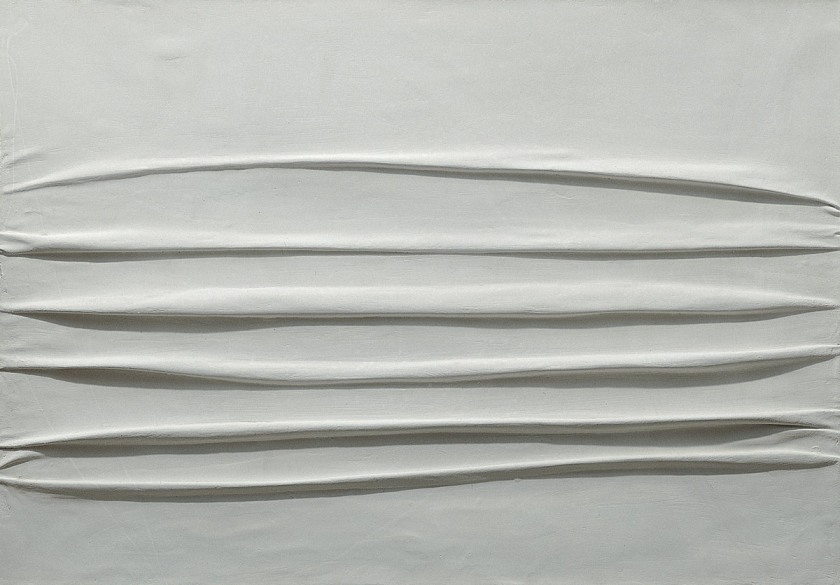




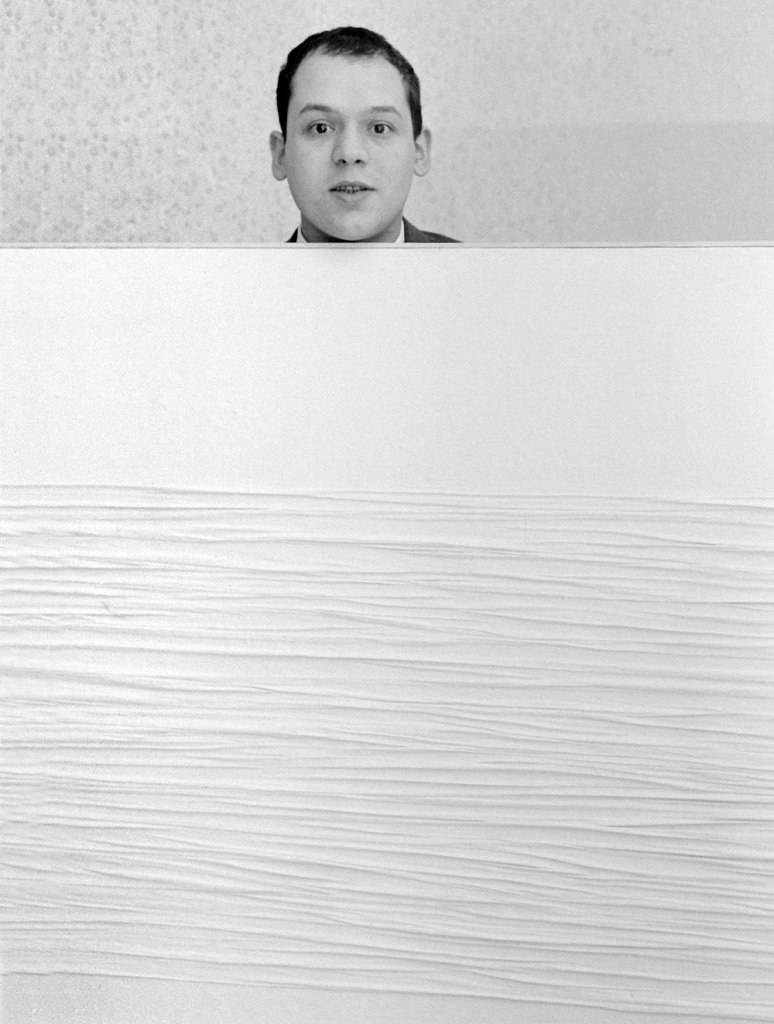



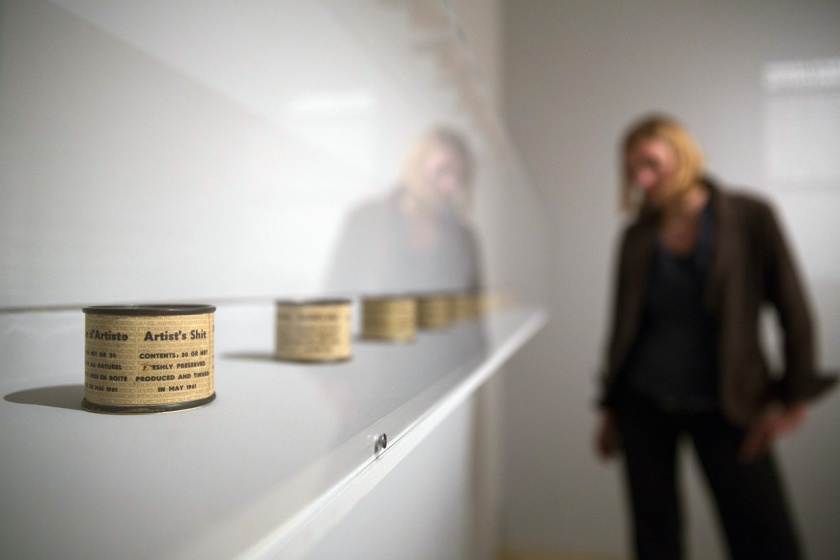
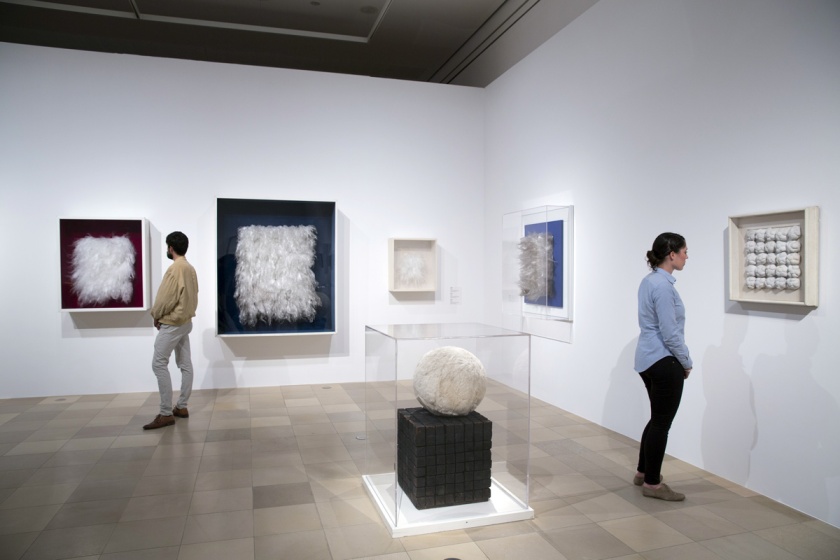



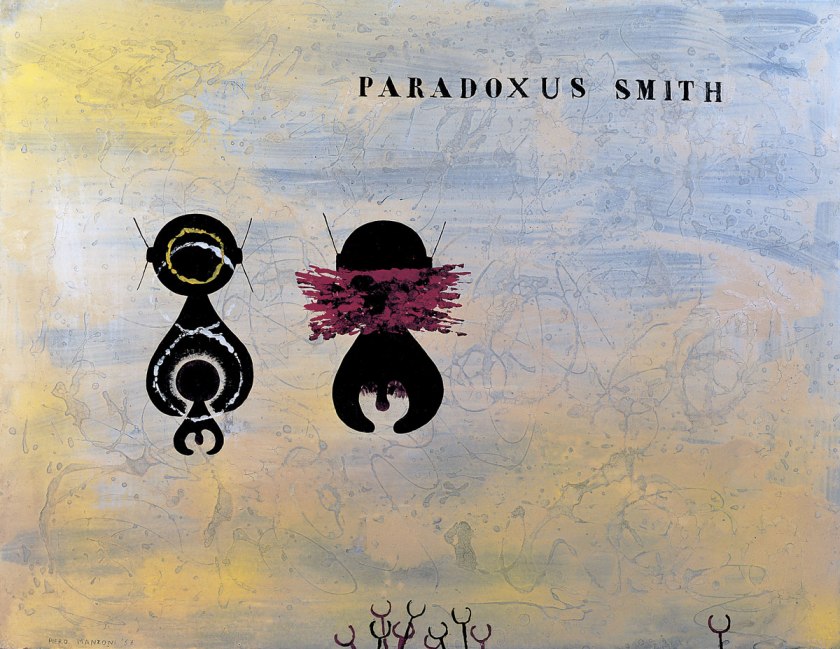






You must be logged in to post a comment.